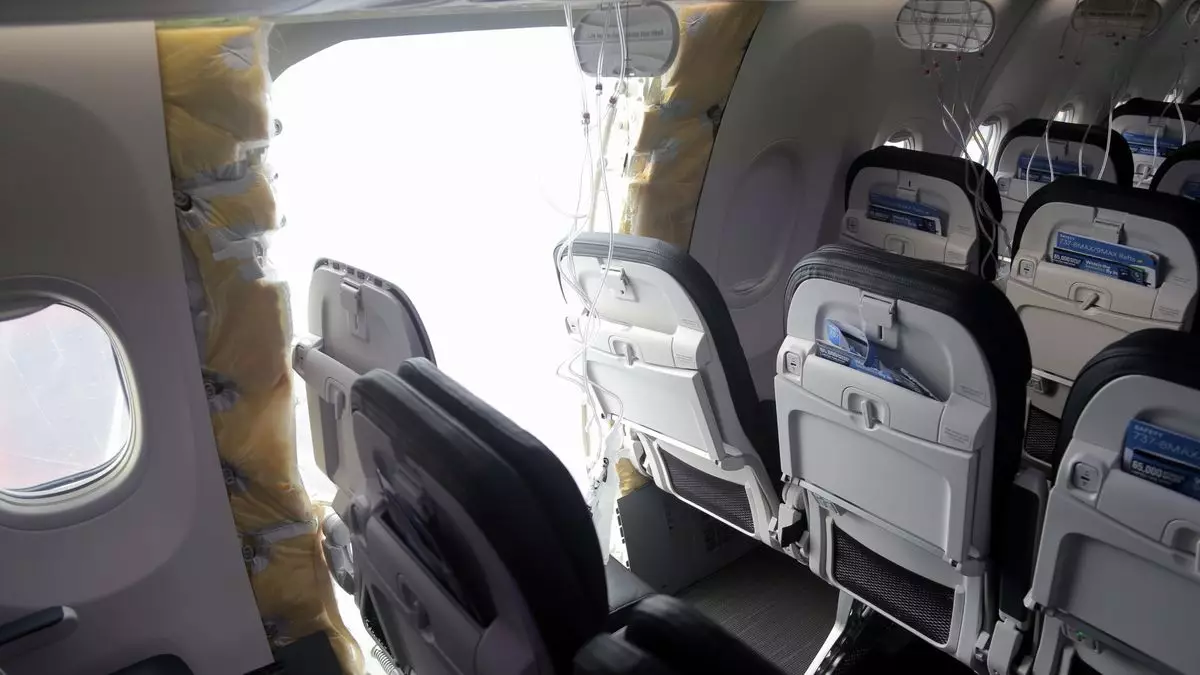The Boeing factory workers have recently come forward with shocking allegations of being pressured to work too fast and asked to perform tasks for which they were not qualified. The incident involving the blowout of the door plug on an Alaska Airlines jet has further tarnished Boeing’s safety reputation. These revelations were brought to light during a two-day hearing conducted by federal investigators.
One worker disclosed that there was immense pressure to keep the assembly line moving, leading to mistakes being made. The lack of proper training and qualifications for tasks such as opening and closing the door plug were evident. Another worker mentioned that there was no special training provided for handling door plugs, and workers should not have been tasked with such responsibilities. This lack of training and expertise highlights a significant failure in Boeing’s safety protocols.
Workers at the Boeing factory in Renton, Washington, expressed their dismay at the safety culture within the company. One worker described the safety culture as “garbage” and emphasized the lack of accountability among employees. The workers felt that they were being forced to take on tasks beyond their expertise and were left to deal with the consequences of management’s negligence.
The blowout on the Boeing 737-9 Max resulted in chaos onboard the aircraft, with the cockpit door blowing open and passengers experiencing a rapid decompression. The crew and passengers were left traumatized by the event, with the rapid decompression causing significant distress and confusion. Despite the terrifying nature of the incident, there were miraculously no major injuries reported.
The National Transportation Safety Board revealed that four bolts securing the panel responsible for the blowout had not been replaced after a repair job. The lack of documentation regarding the repair work at the Boeing factory raised serious questions about oversight and maintenance procedures. The safety board’s investigation highlighted the need for better documentation and oversight to prevent such incidents in the future.
Boeing and Spirit AeroSystems executives attributed the incident to the turnover in experienced workers due to the COVID-19 pandemic. Both companies acknowledged the need for increased training and quality control measures to prevent similar incidents from occurring. Boeing’s senior vice president of quality emphasized the company’s commitment to improving safety standards and training procedures in response to the incident.
Boeing has pledged to enhance its manufacturing processes and focus on safer practices rather than just lean manufacturing. The company is working on redesigning door plugs to prevent such incidents from happening in the future. The Federal Aviation Administration is closely monitoring Boeing’s production process, setting limits on production rates until safety concerns are adequately addressed. Both Boeing and Spirit AeroSystems are working to improve training and quality control measures to ensure the safety of their aircraft.
The Boeing factory incident serves as a stark reminder of the consequences of neglecting safety protocols and the importance of accountability within the aerospace industry. The incident has prompted a reevaluation of safety practices and oversight procedures to prevent similar incidents in the future. It is crucial for companies like Boeing to prioritize safety above all else to ensure the well-being of passengers, crew, and the reputation of the aviation industry as a whole.

